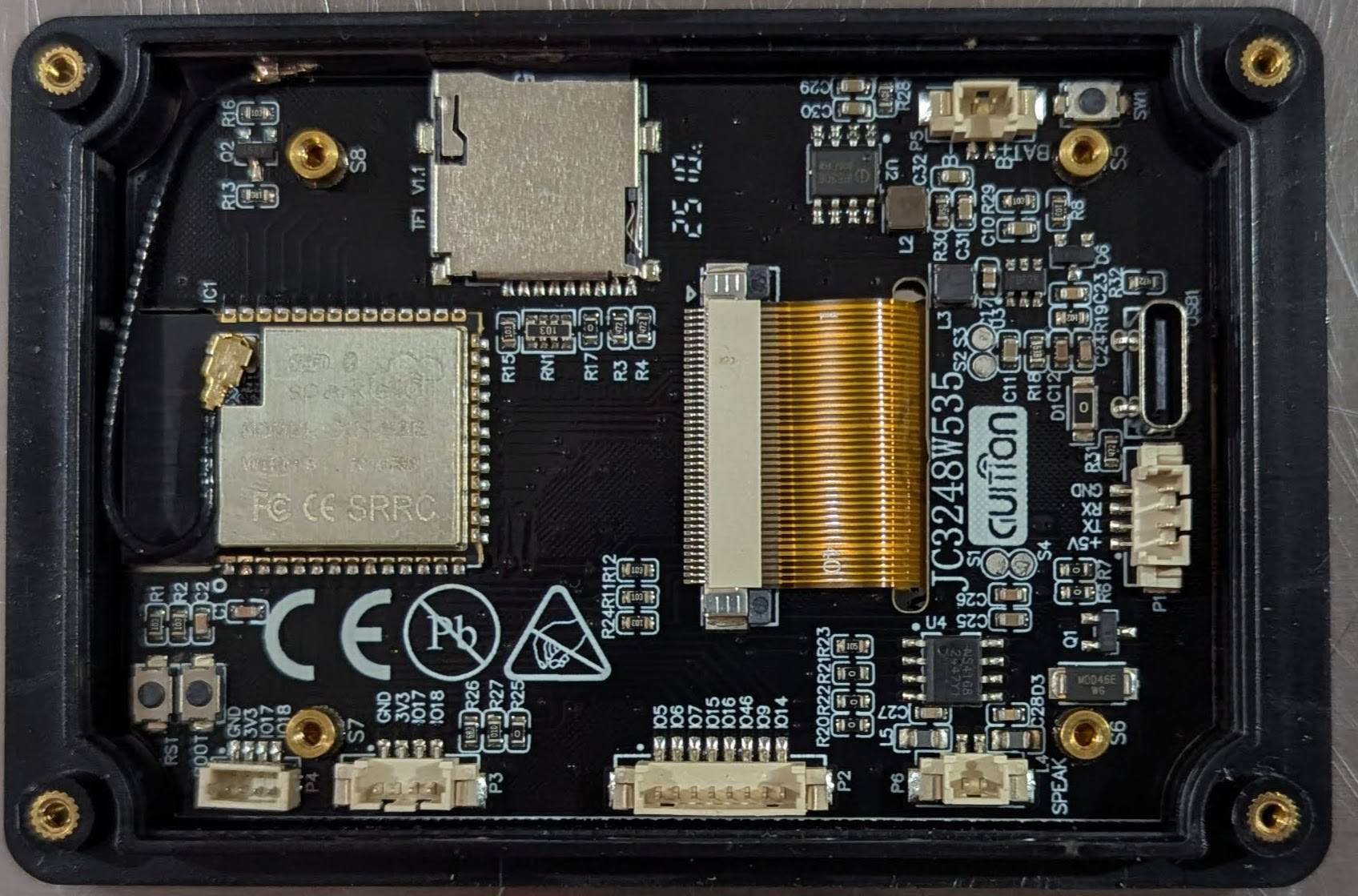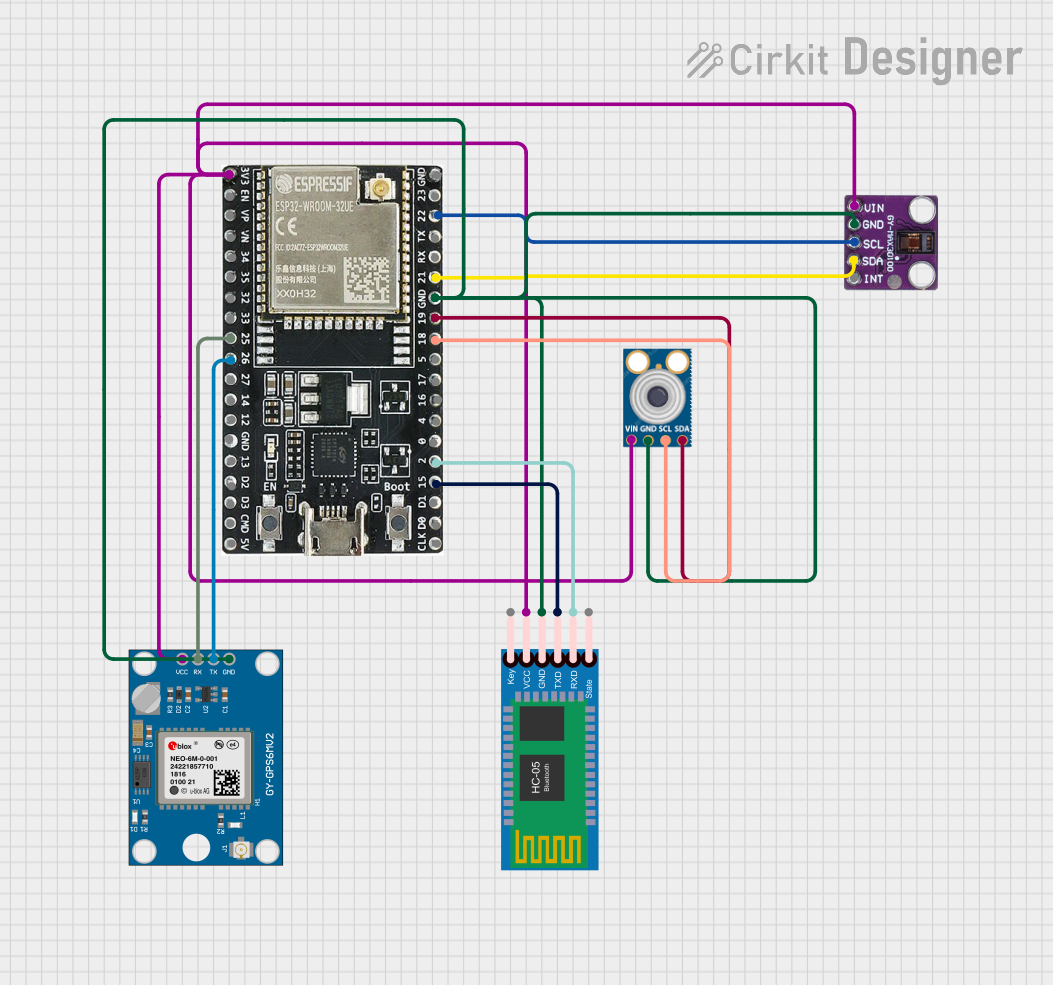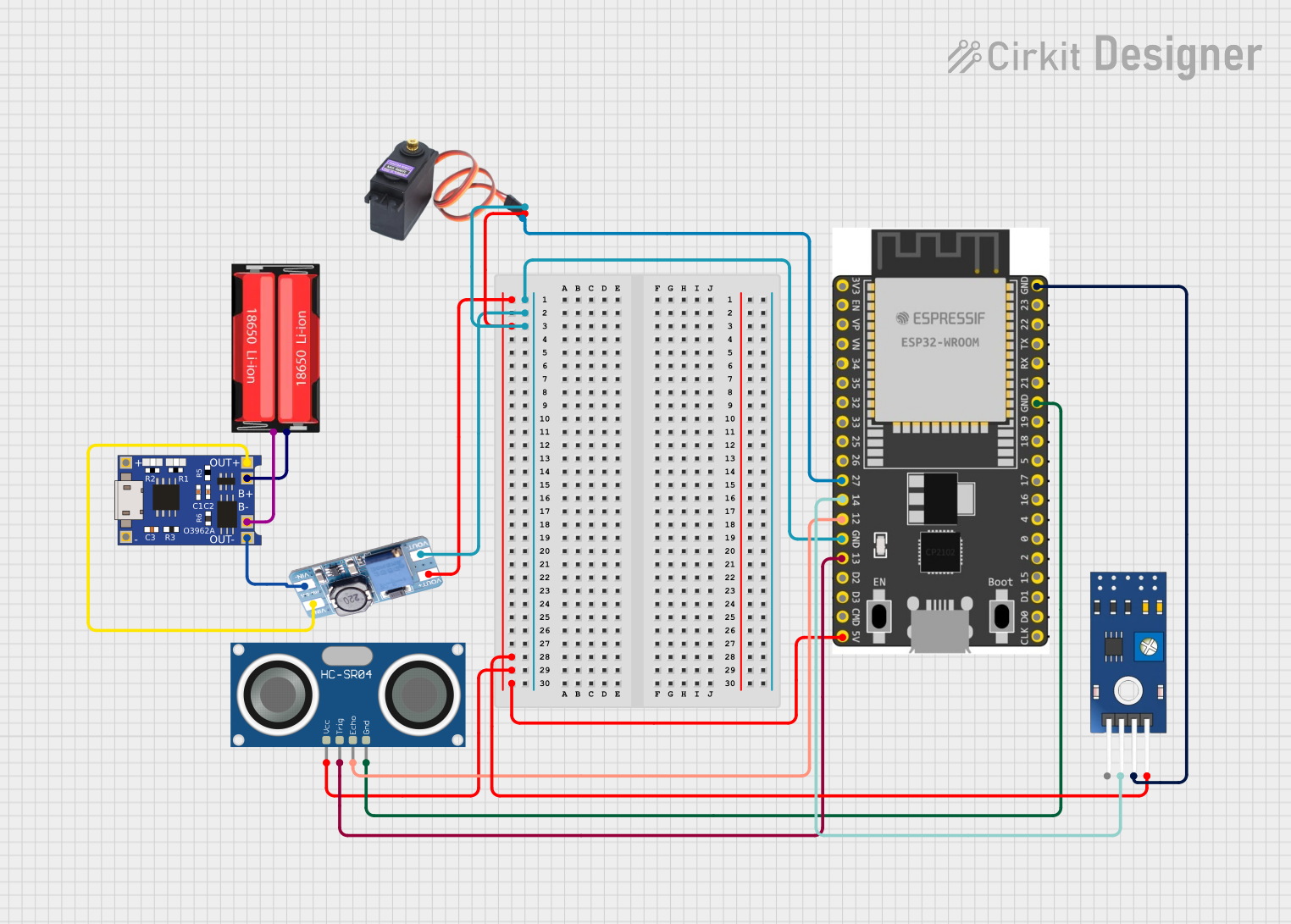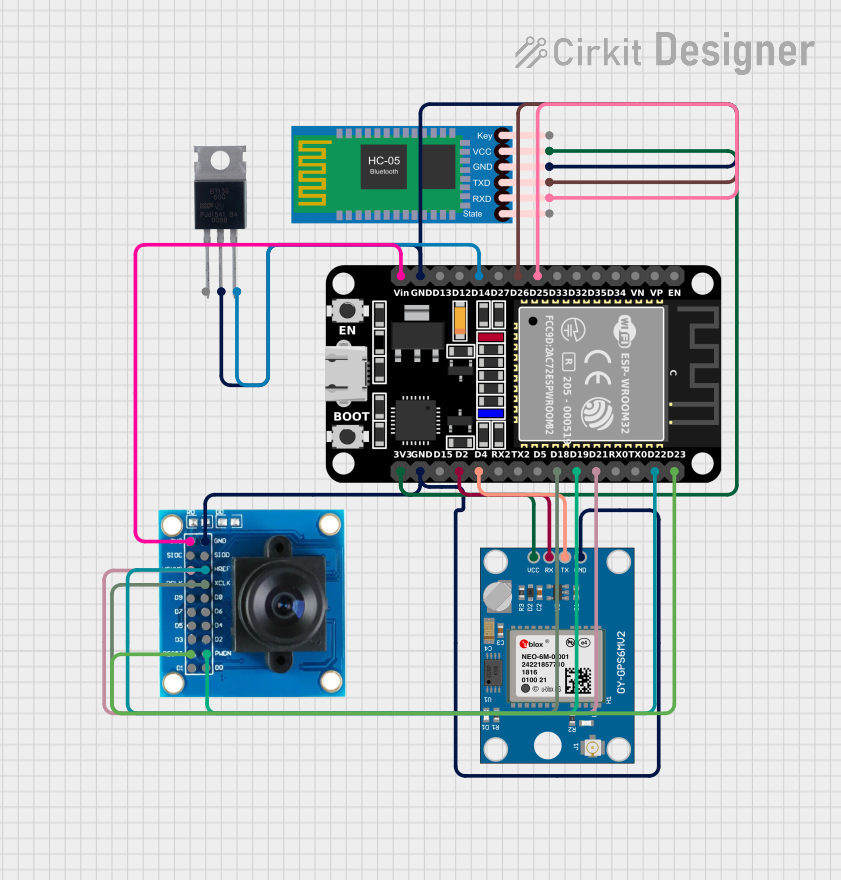
How to Use JC3248W535C Esp32: Examples, Pinouts, and Specs

 Design with JC3248W535C Esp32 in Cirkit Designer
Design with JC3248W535C Esp32 in Cirkit DesignerIntroduction
The JC3248W535C Esp32, manufactured by GUItion, is a high-performance, low-power microcontroller module designed for IoT (Internet of Things) applications. It is based on the ESP32 chipset, which integrates Wi-Fi and Bluetooth capabilities, making it ideal for wireless communication and smart device projects. This module is widely used in applications such as home automation, wearable devices, industrial IoT systems, and robotics.
The JC3248W535C Esp32 is particularly valued for its dual-core processor, extensive GPIO options, and support for multiple communication protocols, enabling developers to create versatile and efficient solutions.
Explore Projects Built with JC3248W535C Esp32

 Open Project in Cirkit Designer
Open Project in Cirkit Designer
 Open Project in Cirkit Designer
Open Project in Cirkit Designer
 Open Project in Cirkit Designer
Open Project in Cirkit Designer
 Open Project in Cirkit Designer
Open Project in Cirkit DesignerExplore Projects Built with JC3248W535C Esp32

 Open Project in Cirkit Designer
Open Project in Cirkit Designer
 Open Project in Cirkit Designer
Open Project in Cirkit Designer
 Open Project in Cirkit Designer
Open Project in Cirkit Designer
 Open Project in Cirkit Designer
Open Project in Cirkit DesignerTechnical Specifications
The JC3248W535C Esp32 offers robust performance and flexibility. Below are its key technical details:
General Specifications
| Parameter | Value |
|---|---|
| Manufacturer | GUItion |
| Part ID | JC3248W535 |
| Microcontroller | ESP32 Dual-Core Processor |
| Clock Speed | Up to 240 MHz |
| Flash Memory | 4 MB |
| SRAM | 520 KB |
| Wireless Connectivity | Wi-Fi 802.11 b/g/n, Bluetooth 4.2 (BLE) |
| Operating Voltage | 3.3V |
| Power Consumption | Ultra-low power in deep sleep mode (<10 µA) |
Pin Configuration and Descriptions
The JC3248W535C Esp32 module features a total of 38 pins. Below is the pinout description:
Power Pins
| Pin Name | Description |
|---|---|
| VIN | Input voltage (5V) |
| 3V3 | Regulated 3.3V output |
| GND | Ground |
GPIO Pins
| Pin Name | Description |
|---|---|
| GPIO0 | General-purpose I/O, boot mode selection |
| GPIO2 | General-purpose I/O, supports ADC and PWM |
| GPIO4 | General-purpose I/O, supports ADC and PWM |
| GPIO5 | General-purpose I/O, supports ADC and PWM |
| GPIO12 | General-purpose I/O, supports ADC and PWM |
| GPIO13 | General-purpose I/O, supports ADC and PWM |
| GPIO14 | General-purpose I/O, supports ADC and PWM |
| GPIO15 | General-purpose I/O, supports ADC and PWM |
| GPIO16 | General-purpose I/O |
| GPIO17 | General-purpose I/O |
Communication Pins
| Pin Name | Description |
|---|---|
| TXD0 | UART0 Transmit |
| RXD0 | UART0 Receive |
| SCL | I2C Clock Line |
| SDA | I2C Data Line |
| MOSI | SPI Master Out, Slave In |
| MISO | SPI Master In, Slave Out |
| SCK | SPI Clock |
| CS | SPI Chip Select |
Usage Instructions
The JC3248W535C Esp32 is versatile and easy to integrate into various projects. Below are the steps and best practices for using this module:
Basic Setup
- Power Supply: Ensure the module is powered with a stable 3.3V supply. If using a 5V source, connect it to the VIN pin, as the onboard regulator will step it down to 3.3V.
- GPIO Usage: Configure the GPIO pins as input or output in your code. Avoid exceeding the maximum current rating of 12 mA per pin.
- Programming: Use the Arduino IDE or ESP-IDF (Espressif IoT Development Framework) to program the module. Install the necessary board definitions and libraries for ESP32.
Example: Blinking an LED with Arduino UNO
Below is an example of how to blink an LED connected to GPIO2 using the Arduino IDE:
// Include the necessary library for ESP32
#include <Arduino.h>
// Define the GPIO pin for the LED
#define LED_PIN 2
void setup() {
// Set the LED pin as an output
pinMode(LED_PIN, OUTPUT);
}
void loop() {
// Turn the LED on
digitalWrite(LED_PIN, HIGH);
delay(1000); // Wait for 1 second
// Turn the LED off
digitalWrite(LED_PIN, LOW);
delay(1000); // Wait for 1 second
}
Best Practices
- Use level shifters when interfacing with 5V logic devices to avoid damaging the GPIO pins.
- Enable deep sleep mode for battery-powered applications to conserve energy.
- Use decoupling capacitors near the power pins to reduce noise and ensure stable operation.
Troubleshooting and FAQs
Common Issues
Module Not Responding:
- Ensure the module is powered correctly (3.3V or 5V to VIN).
- Check the connections to the UART pins (TXD0 and RXD0) for programming.
Wi-Fi Connection Fails:
- Verify the SSID and password in your code.
- Ensure the router is within range and supports 2.4 GHz Wi-Fi.
GPIO Pins Not Working:
- Confirm the pin mode is set correctly in the code (input/output).
- Avoid using reserved pins (e.g., GPIO6-GPIO11 are used for flash memory).
FAQs
Q: Can I use the JC3248W535C Esp32 with a 5V logic device?
A: Yes, but you must use level shifters to step down the voltage to 3.3V to protect the GPIO pins.
Q: How do I reset the module?
A: Press the onboard reset button or pull the EN pin low momentarily.
Q: What is the maximum Wi-Fi range?
A: The module typically supports a range of up to 50 meters indoors and 200 meters outdoors, depending on environmental factors.
By following this documentation, you can effectively utilize the JC3248W535C Esp32 in your projects.